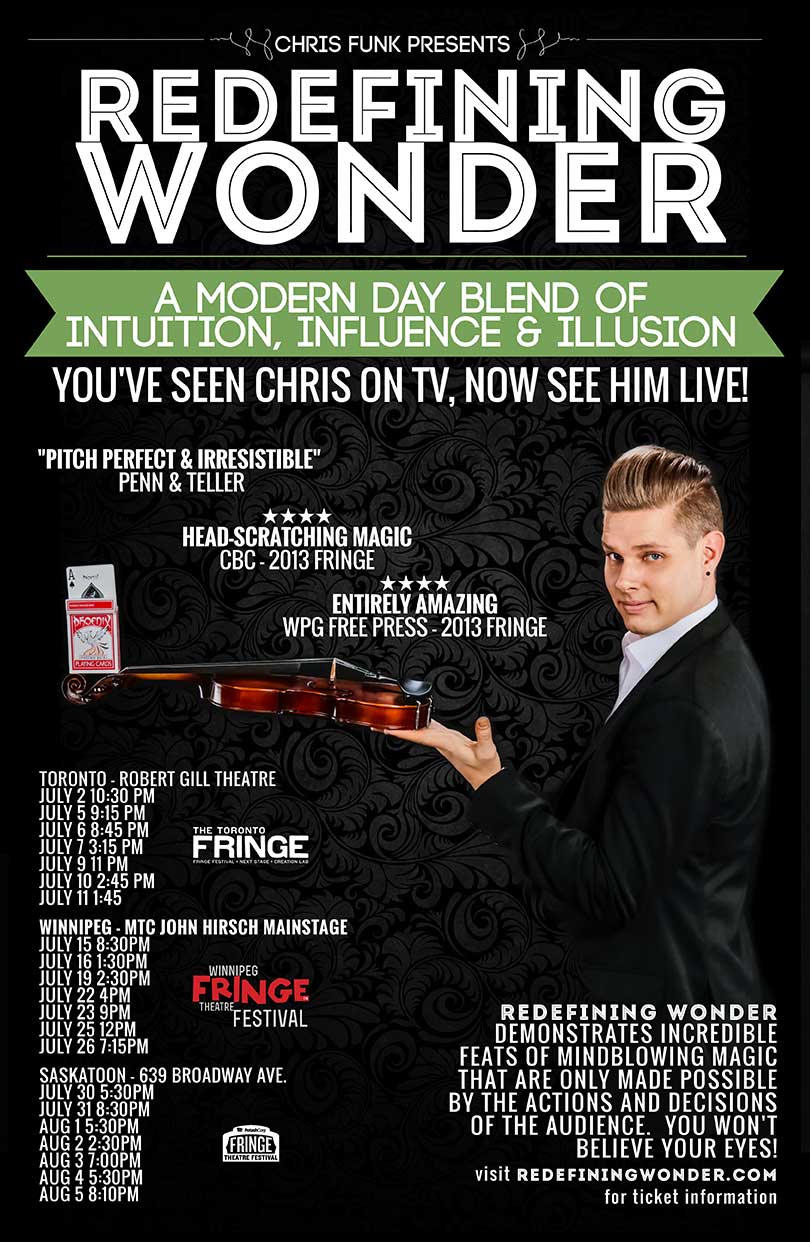Last night, I had the chance to see David Blaine (in concert?) in Hamilton. I've always had a tremendous amount of respect for David, although being tightly entwined with the magic community, there has always been a thing that the cool kids do of criticizing those performers who are immensely more successful than they are, usually for totally arbitrary reasons.
But twenty years ago, his first TV special, Street Magic, redefined close-up magic for the twenty-first century. Through my work with Magicana, I built an online video archive called the Screening Room. The centrepiece of that archive is over thirty hours of footage from an Canadian TV magic series called The Magic Palace where many of the best known magicians of the 1970s appeared as guests. At the moment, I believe I'm still the only person who has watched all of the footage and it's performed in a particular style, appropriate to its time. Now, close-up magic looks nothing like that and I believe that's largely due to David's influence.
An entire generation took his specials as the model for how magic needed to be done (whether they understood what he was doing or not.) So of someone under the age of 35 now tries to show you a piece of close-up magic, chances are they are "doing" David Blaine for you.
Now, full disclosure, many of us bought tickets to the show expecting to be disappointed. He is, after all, a close-up performer, and this was a theatre of over a thousand seats. There was some serious skepticism as to whether or not he could pull it off. Either, the show would just be too small, or in order to do larger pieces, he would have to have to present Vegas-style grand illusions which would just ring false.
Instead of disappointment, we got a religious experience. (And for me that's saying something!) Since the tour continues, I should avoid spoiling things. Although if you have seen the TV specials, you will recognize large parts of the show. Perhaps parts of the show which you thought could only be performed in the extremely controlled conditions of a television shoot, where you can re-shoot and edit to your heart's content. Those people will find out very quickly that David is, in multiple ways, the real deal.
Half way through holding his breath under water.
This is the only part of the performance where photography was permitted. One of the things that made this evening astonishing was the tremendous sense of calm, stillness and focus that he brings to the stage. Anything and everything he does becomes enrapturing and you find yourself unable to do anything but sit there and watch what he's doing. Even when what he's doing is nothing. I've heard people say they would buy a ticket to go listen to James Spader read a phone book. You could buy a ticket to watch David Blaine just stand there.
That counter shows five minutes and one second. He did make it slightly past the ten-minute mark. There was a very strange tension in the room. It was, I believe, that the entire room knew they were about to give him a standing ovation, but were waiting for permission to do so. While he was deprived of oxygen, the audience was being deprived of its ability to react. And, as can clearly be seen, part of it was probably the unwillingness to put down the phones.
Perhaps the sea of lights, is the new standing O. (Unfortunate that it's practically invisible to the performer on stage.
The other magic trick of the night... thank you Hamilton






